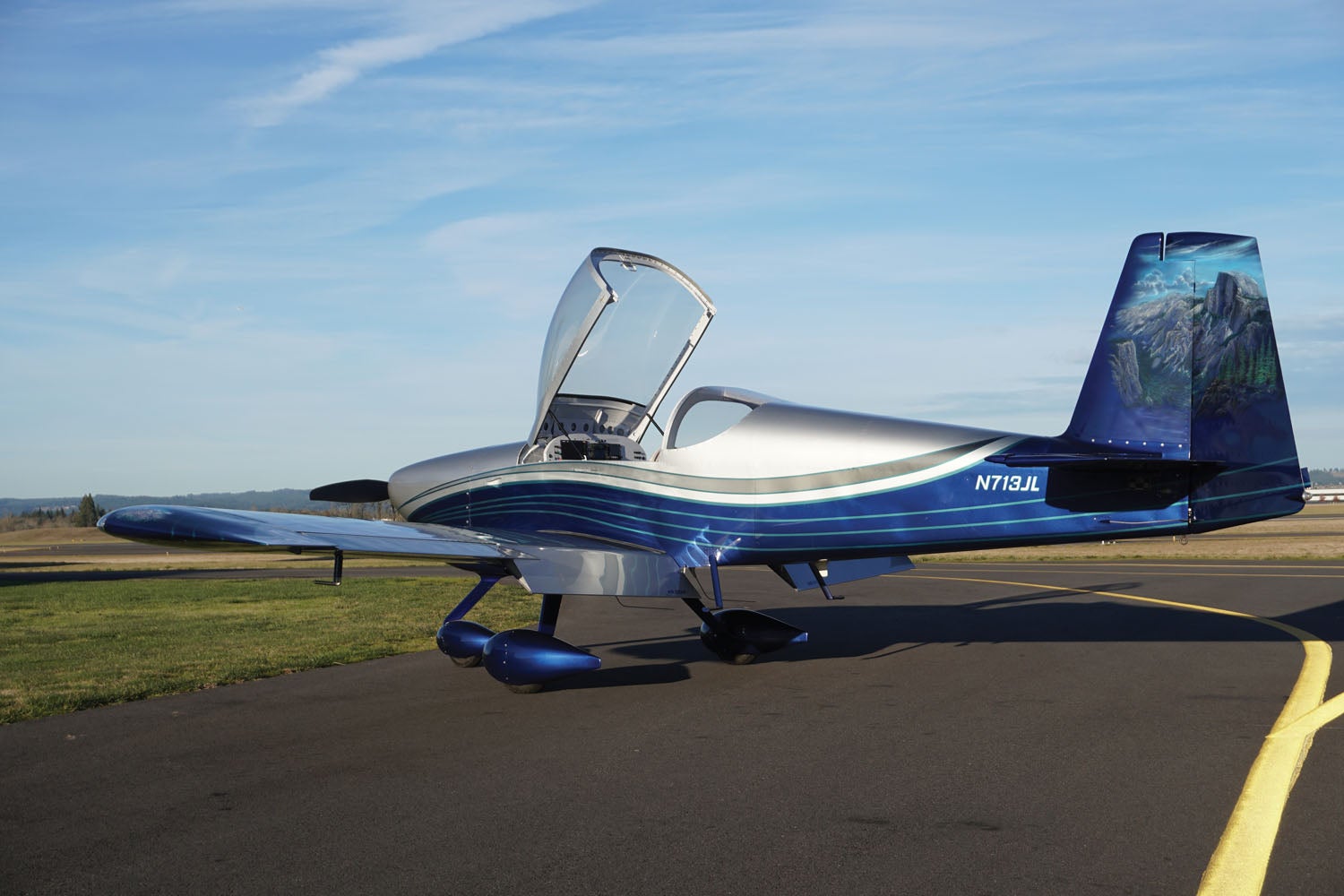 Next in our series on buying a used Experimental/Amateur-Built airplane is Van’s RV-7/7A. These are the successors to the world’s most popular E/A-B kits, the RV-6/6A. More fuel, more engine choices and more load-carrying ability make this “improved RV-6” one of the most popular kits in the Van’s lineup with over 1800 completed to date.
Next in our series on buying a used Experimental/Amateur-Built airplane is Van’s RV-7/7A. These are the successors to the world’s most popular E/A-B kits, the RV-6/6A. More fuel, more engine choices and more load-carrying ability make this “improved RV-6” one of the most popular kits in the Van’s lineup with over 1800 completed to date.
Just a reminder, in Van’s parlance the “A” at the end of the model designator means the kit is slated to have tricycle landing gear. Without the “A” it will have conventional (taildragger) gear.
History
The RV-7 made its debut in the spring of 2001 at Sun ’n Fun as a replacement for the discontinued RV-6 series. Some 19 years later it is still selling well but has yet to threaten the record of almost 2700 RV-6/6A completions. With so many choices now available from Van’s and others, it may never reach that number. Nevertheless, a large number of fine RV-7s in both gear configurations are available, so potential buyers shouldn’t have too much trouble finding something to entice them.
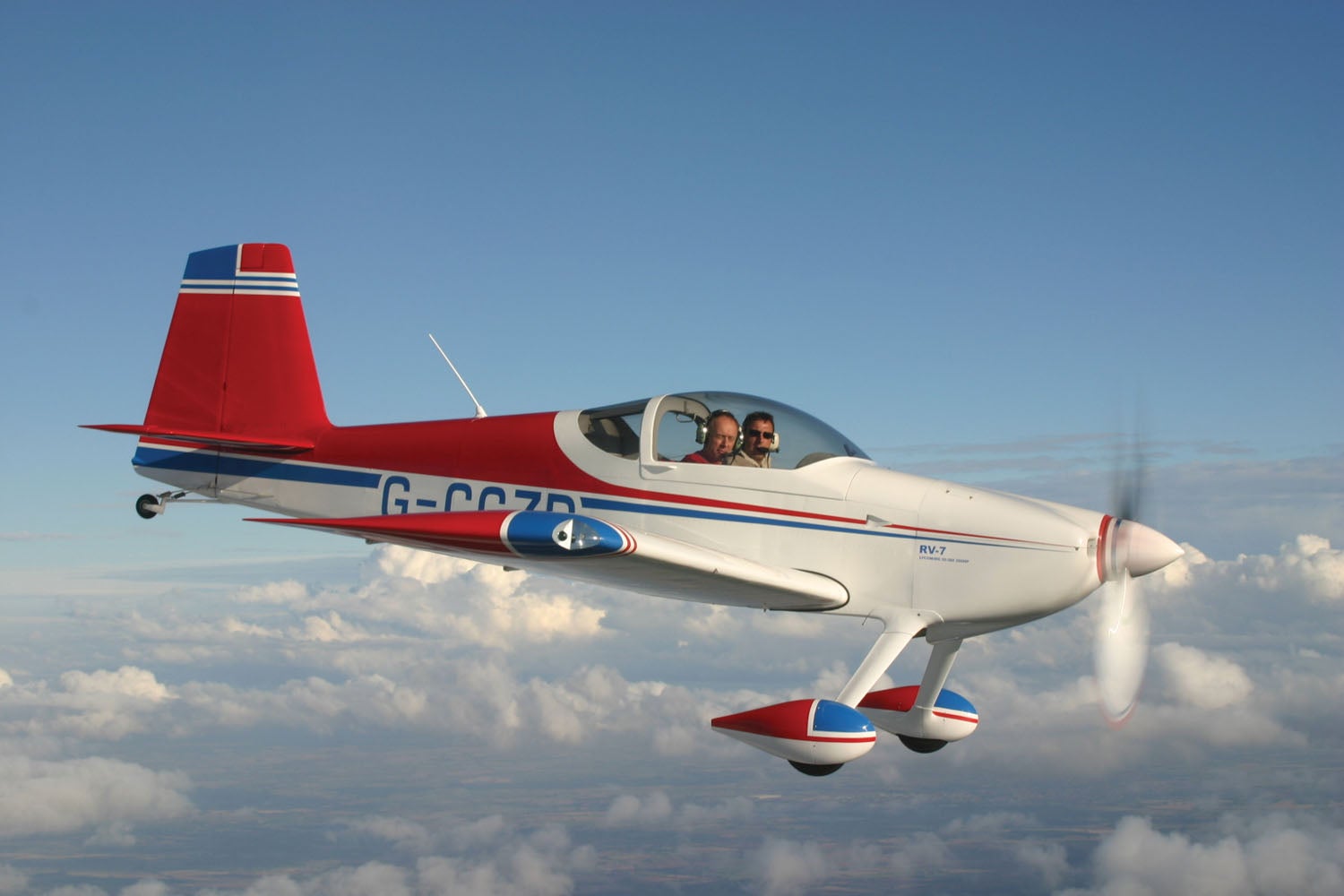
Design
The RV-7 originally came with the larger tail found on late RV-6s, but more extensive testing suggested that a still-larger tail would provide better spin recovery. This resulted in kits shipped after May 20, 2002 coming standard with the RV-9 tail. Van’s then made provisions for owners of earlier kits to replace their tails with the larger version (see Van’s service bulletin SB 02-6-1). The RV-7 shares many other parts with the RV-8 and RV-9 series kits in an effort to save money across the line of products.
In order to increase gross weight and useful load, the RV-7 includes a greater wingspan of 25 feet compared to the RV-6’s 23 feet, but the chord and airfoil remain the same. This allows a 200-pound increase in gross weight to 1800 pounds without fudging the factory recommendation. The longer wings also hold four gallons of extra fuel, something much needed with the larger engine options available in the -7. The extra gross weight also comes in handy when builders add autopilots and other more sophisticated avionics, which all tend to increase the empty weight. On the slightly negative side, the extra weight is only partly offset by more wing area, meaning that the RV-7 has a small, 2-knot increase in stall speed over the -6, if the -6’s recommended 1600-pound gross weight is respected.
Following the example of the later RV-6 kits, the RV-7 kits come match hole drilled for easier assembly. The design has remained largely unchanged since then.
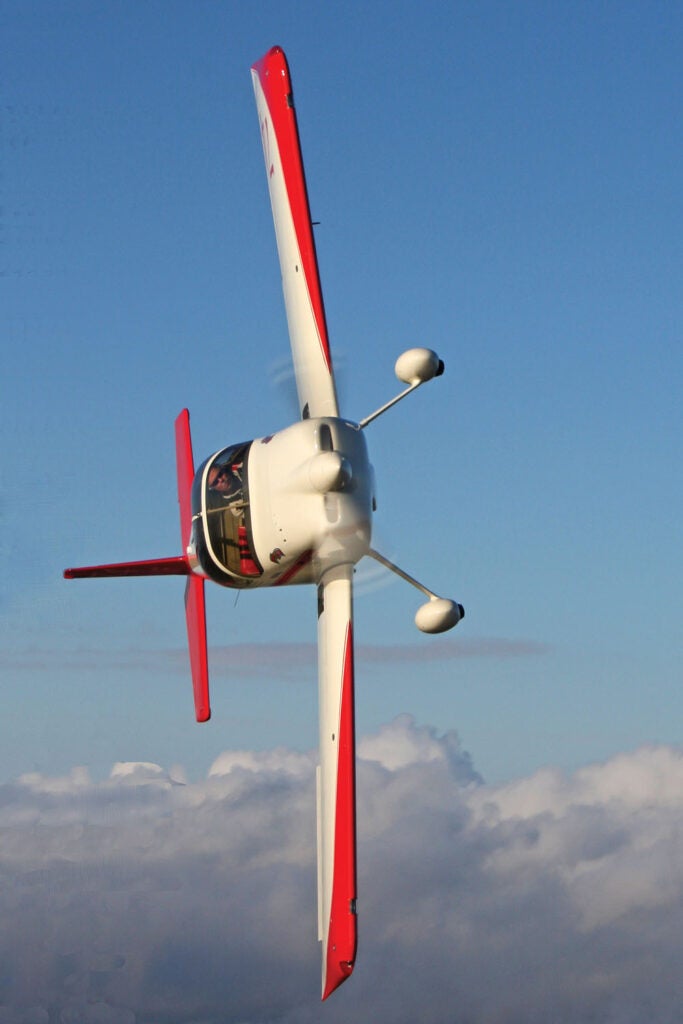
In SB 02-6-1, Van’s goes into detail about the aerobatic capabilities of the RV-7. It is worth reading in its entirety if you are seriously considering buying an RV-7 or -7A. In Van’s words, “They were designed primarily as sport/cross-country airplanes with sufficient performance and control authority to safely perform basic recreational aerobatic maneuvers such as loops and rolls. We do not consider aerobatic maneuvers such as high-speed multiple snap rolls and tail slides, which can impose high airframe loads, to meet our definition of sport aerobatics.”
Inverted flight is possible if the builder makes the necessary provisions, but the RV series of airplanes do not have symmetrical airfoils that allow for better performance in upside down or negative-G situations.
Different Configurations
Like the RV-6 before it, RV-7 kits come either with tricycle gear or conventional gear. However, unlike some planes such as the GlaStar, switching from one gear configuration to the other after building is not really an option. You make your choice and live with it. RV-7s are also available with either a sliding or tip-up canopy. Both the gear and canopy options are roughly equally split among the planes available. Conventional gear is said to provide a two-knot speed advantage, but choices individual builders make with engine and propeller options, not to mention their skill at rigging, make such a difference largely irrelevant in a practical sense.
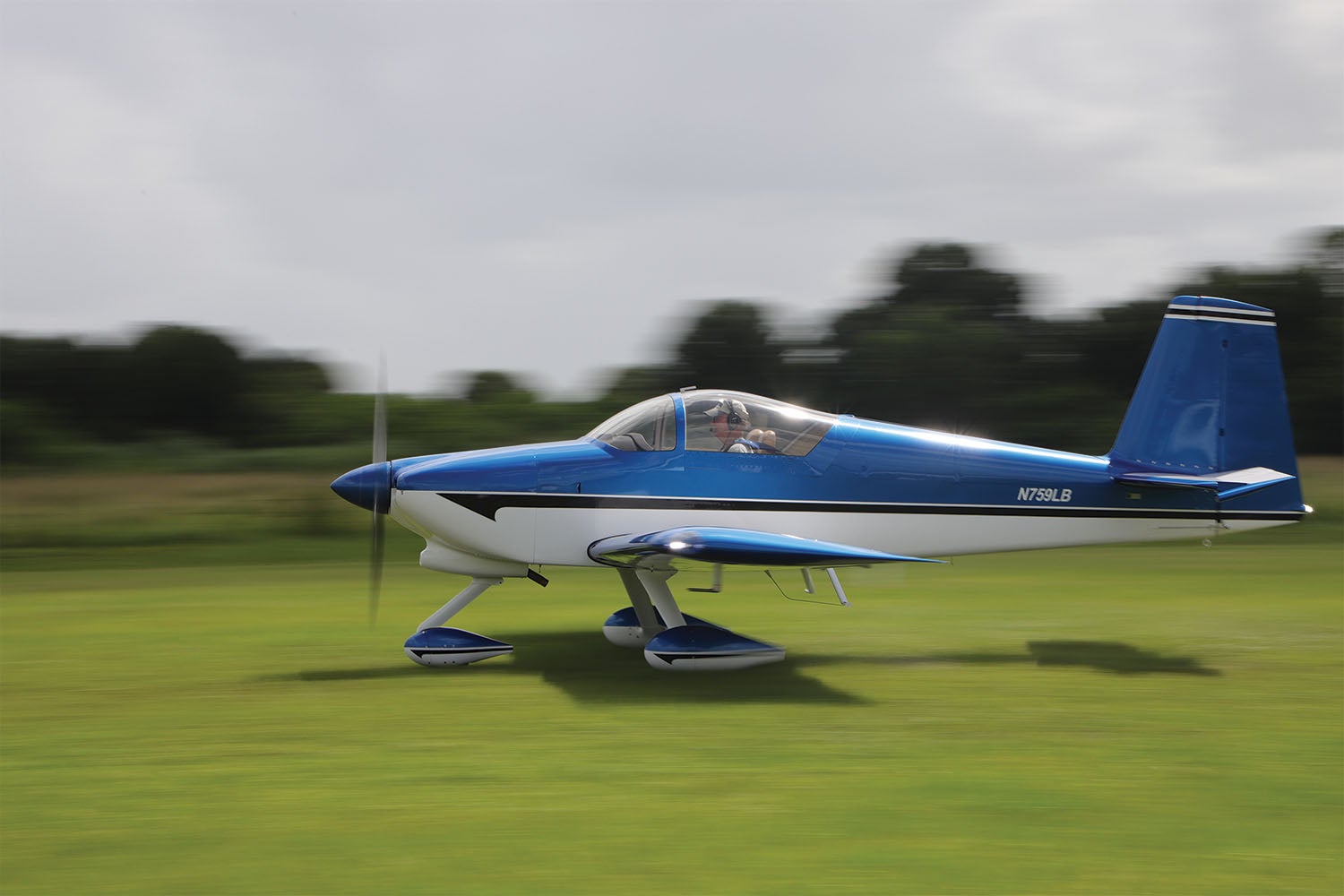
There are many more examples of RV-7s available with larger engines and constant-speed propellers than you will find with RV-6s. This is in keeping with the greater expectations and willingness to spend money to meet those expectations found in the typical RV-7 builder. In a very real sense, the advent of the RV-7 series marked the end of the price-conscious era of the RV-6 and ushered in an era where builders wanted more capability out of their planes and were willing to pay for it.
It still matters that you pay attention to empty weight, both from a flight performance standpoint and a utility standpoint. Big angle-valve engines add lots of weight and yield relatively small performance gains. Some of this can be offset with a composite propeller, but not all of it. It is easy to get seduced by a big horsepower number, but each configuration has its pros and cons. Be sure to understand not only the benefits but also the downside of the choices made in the plane you are considering.
What to Look For
The RV-7 is a sturdy plane that holds up well under normal use, but condition does vary from one plane to another, and condition is very important. It is always better to get the best plane you can afford rather than get a cheap plane that needs work to bring it back to excellent condition at your expense. This makes a prebuy inspection vital.
There are a number of service bulletins that should concern you. Hopefully the builder or a subsequent owner has logged compliance with them in the airplane records. Missing service bulletin compliance is a definite negative for you as a buyer. The big ones deal with cracks in various places in the airframe. SB 16-03-28 deals with cracking in the aft wing spars at the inboard aileron hinge bracket attach point. SB 14-02-05 deals with cracks in the elevator spar and SB 14-01-31 deals with cracks in the horizontal stabilizer spar. These typically arise from enthusiastic aerobatic maneuvers that may not have been well executed or are outside of what Van’s considers sport aerobatics. In any case it is important to have a competent person inspect these items for compliance and possible damage. If damage is found, Van’s sells retrofit kits to repair and reinforce the damaged areas. AntiSplatAero LLC also sells kits to reinforce the tail attachment points in hopes of preventing future damage.
A service bulletin that applies to all RV trikes is SB 14-12-22 that calls for inspection and correction, if needed, of the installation of the nosewheel stop. This is a simple but important matter. Beyond that, there are a number of other service bulletins that should be addressed by any owner of a plane you are considering. See Van’s website for all of the service bulletins.
The need for a prebuy inspection of any potential purchase by someone familiar with the type cannot be overemphasized. This inspection should include a thorough review of the aircraft service records and a physical inspection of the airplane. Anything likely to be found in a prebuy inspection is likely to cost money to correct. The idea is to be sure you aren’t the one who is going to pay for fixing it unless you have agreed to do so.
Engine Options
One advantage of the RV-7 over the RV-6 is the ability to accommodate more engine choices, including the angle-valve 200-hp Lycoming IO-360. Most planes are going to have some version of the parallel-valve 180-hp O-360 Lycoming engine, with many newer planes having fuel injection. This basic engine seems to represent the best compromise of price, power and weight. You may also see Superior and ECI (now Continental) versions of the Lycoming design. All of these engines represent good value to the potential buyer if they have been well maintained.
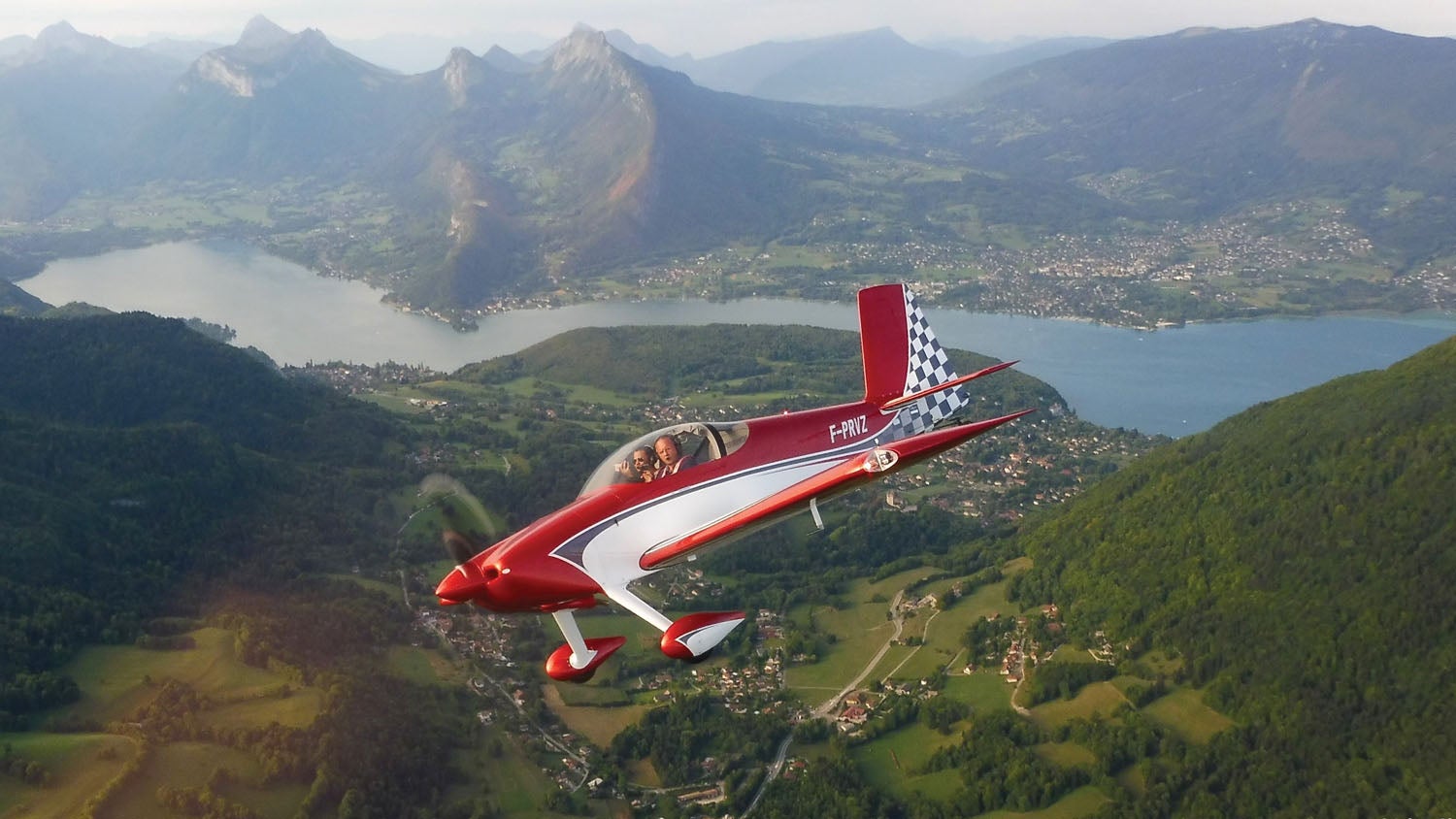
Engines other than Lycoming-type engines detract from the value of the plane. If you find a plane with a Subaru or Mazda engine conversion, you should expect to pay way less for it, say $40,000 less or so, than if it were Lycoming equipped. Because of the problems these engines had, most have been replaced by now, but beware if you find one that hasn’t. That does not mean that there are not people who enjoy their alternative engines, but the marketplace has spoken, and it says planes with these engines are less desirable.
Of course, the O-320-series Lycoming engines are another choice, but expect to lose something in cruise and climb performance with the lower power output of these engines. On the plus side, they are very economical to operate and also a bit lighter.
You are much more likely to find a constant-speed prop on a used RV-7 than on an RV-6. Metal props, almost exclusively by Hartzell, are fairly common. There are also a few metal fixed-pitch props, mostly by Sensenich, that may be found on lower priced models. Newer versions may sport ground-adjustable composite props by Sensenich or WhirlWind to name two, or composite constant-speed props by MT, Hartzell and WhirlWind. There are also at least a few fixed-composite props out there by Catto and others. Be aware that light props may shift the center of gravity more rearward than you would like, limiting baggage carrying capacity. Be sure to check weight and balance before you buy.
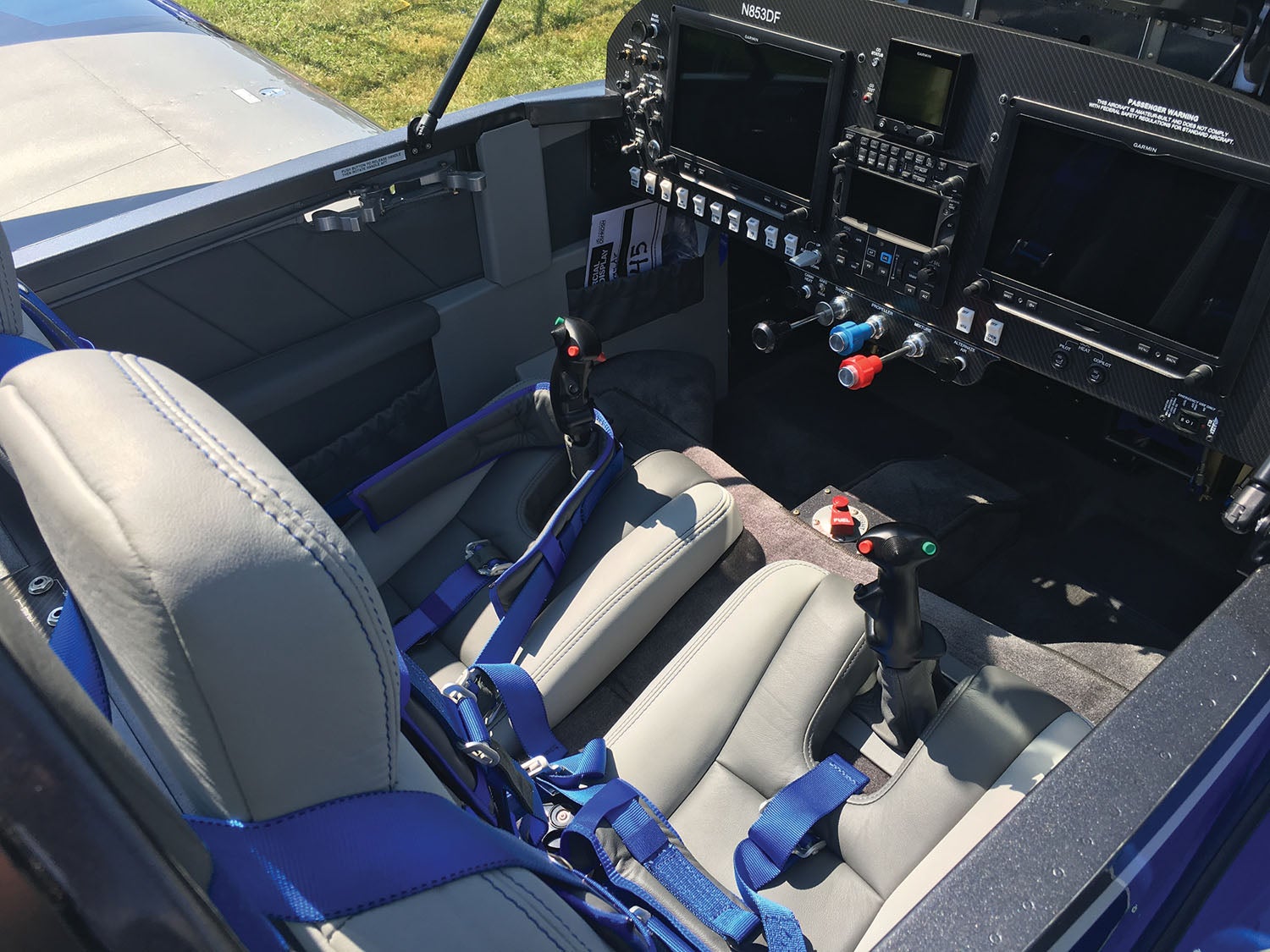
Typical Avionics
Early RV-7s will likely have steam gauges and VOR receivers in their panels, but those completed more recently will usually have glass panels by Dynon, AFS or Garmin, with a few Grand Rapids and others rounding out the field. Many may have round instruments as backups to the glass, but the more recent ones will most likely have electronic backups such as the Garmin G5. These later versions also may not have any VOR capability at all, relying exclusively on GPS navigation.
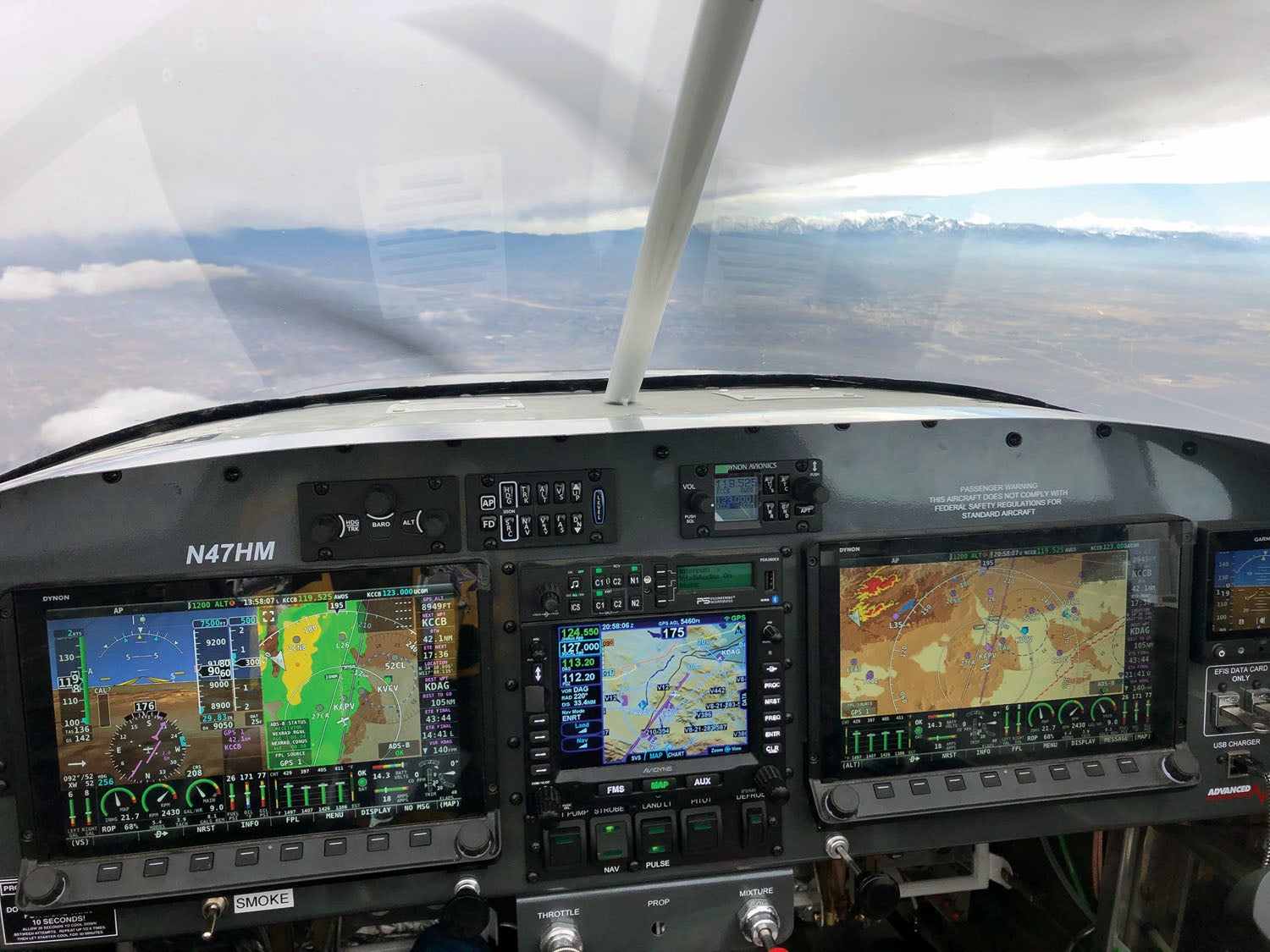
The big question to ask yourself as a buyer is, do I need IFR capability? Many very nice panels do not have approach-approved GPS and are therefore not going to work for IFR flight. Do not be fooled by fancy displays. Make sure you have IFR-approved navigation equipment if you need it. It is expensive to add later. Backup systems are also very important to instrument pilots. Be sure you understand what you are getting when you consider your purchase. The good news is that there are quite a few IFR-capable planes that have been built, so you should be able to find one to suit your needs. The bad news is that these fancy panels add cost and bump up the selling price, pushing many well-equipped RV-7s above $150,000 on the used airplane market.
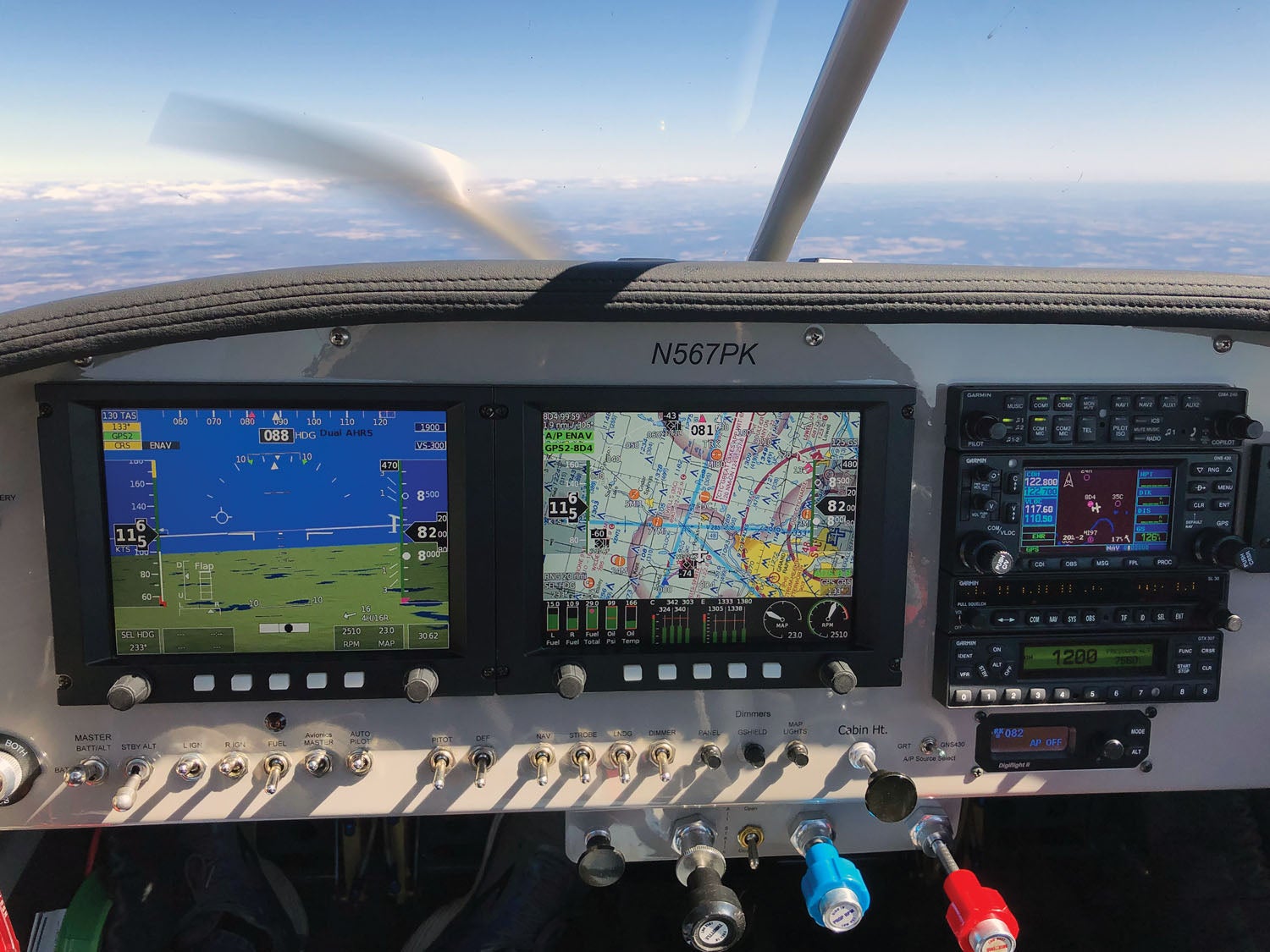
Common Modifications
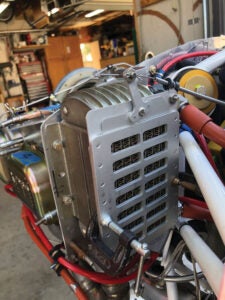
One modification that many RV builders have embraced is a plenum in lieu of baffle seals in the engine compartment. A well-built plenum does a great job of forcing cooling air through the engine with virtually no leakage. Their downside is that they must be removed to service spark plugs. All things considered, I would consider a plenum a plus.
AntiSplatAero sells a number of popular mods for the RV-7 and other Van’s models. Visit their website for the complete rundown. Many builders and owners have added one or more of these items to their RV-7. I have come across a few other modifications that seemed to be practical. There can be a tendency, however, to load a plane up with a lot of minor mods and gadgets that mostly add weight and complexity, neither of which is desirable.
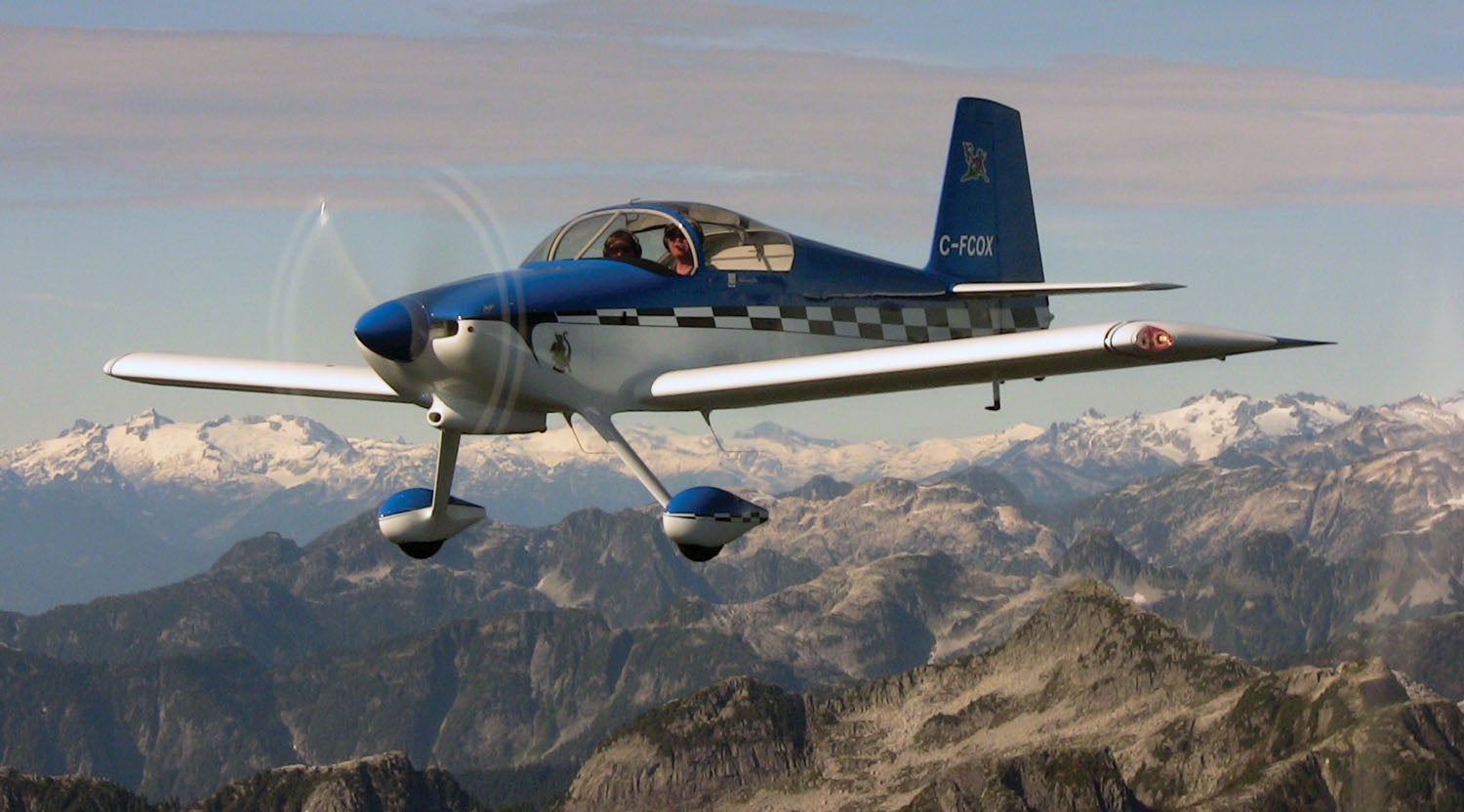
Performance and Flying Qualities
As with most of their models, Van’s designed the RV-7 to be sporty but also capable of cross-country flight. This compromise means they are well suited for what you might call gentlemen’s aerobatics but still stable enough to fly a few hundred miles or more on a longer flight. The downside of this compromise is that they are not the most stable IFR platform without autopilot assistance. This is not your Cessna 172 or Piper Cherokee. If you want something that is as stable as a one-ton truck and holds 150 pounds of luggage, you should be looking somewhere else. But that seems to be just fine with over 10,000 RV owners.
The bigger complaint I hear is that RV owners who go back and fly a Cessna or Piper say they can’t believe what dogs those planes feel like compared to how they remember them. Compared to these planes, the RV-7 and other Van’s models have controls that are light and responsive, with handling that makes you feel really connected to the plane. The flip side of that is there is a sacrifice in stability inherent in the light and responsive feel.
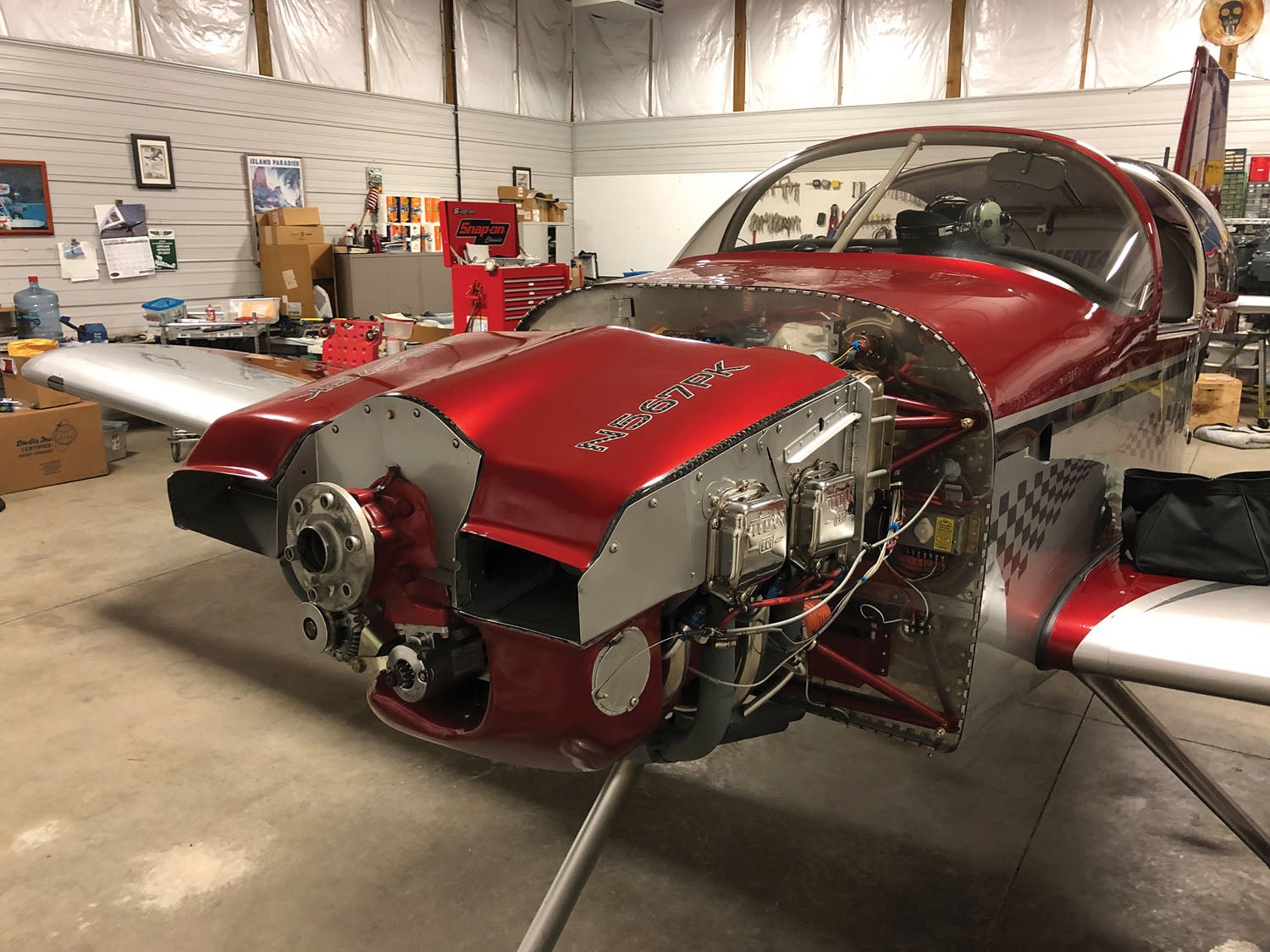
Resources
By far the largest and most active user group in Experimental aviation is the Van’s Air Force forum. It is a tremendous source of information—and occasionally misinformation—about all things Van’s and RV airplanes. There is even a section devoted exclusively to the RV-7/7A. The Van’s factory does a great job of making service information and parts available on its website, which is often utilized by non-RV builders such as myself. Van’s also has live technical support by phone during limited hours, but many builder problems can be solved on the forum or by a search of its archives.
Prices
Prices of RV-7 models are on average quite a bit higher than for RV-6s. The planes tend to be newer and better equipped, which drives the price upwards as it should. The low end of the RV-7 price range seems to be in the mid-$80,000s. Depending on the engine, prop and avionics, the high end will be upwards of $150,000 or more. A recent look at Trade-a-Plane and Barnstormers.com showed several examples in the $120–140,000 range. If you are looking for something with a constant-speed prop, a 180-hp fuel-injected engine and dual-screen IFR avionics, you will have to pay a good price for it. You can always upgrade a less-well-equipped model, but it is generally cheaper to buy the best plane you can afford and take advantage of the other guy’s efforts.
Calendar age isn’t a big factor for the airframe value, but years of little or no flying should raise a caution flag, especially as it relates to engine condition. Inactivity is often not kind to airplanes. A careful prebuy inspection is always vitally important before any such purchase.
The RV-7 and -7A represent a very good value for an airplane that serves most people’s needs very well. They can be a little tight on space for big guys and do not hold a great deal of baggage, but there’s a reason over 1800 of them are flying and many more are under construction.
Photos: Courtesy of Van’s Aircraft, the RV-7/7A owners and Dave Prizio.














Looking for a used 7A in good shape near California
With complete logs